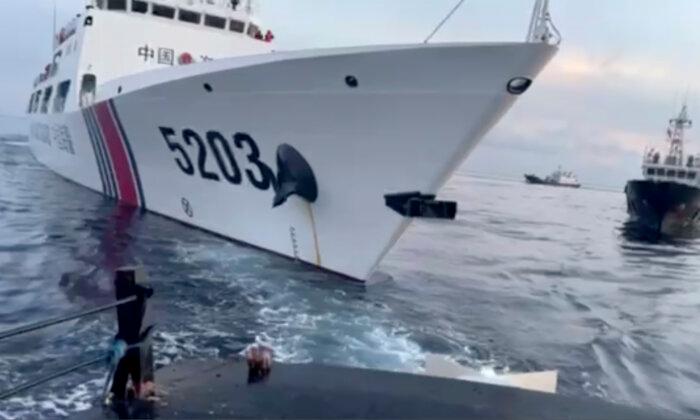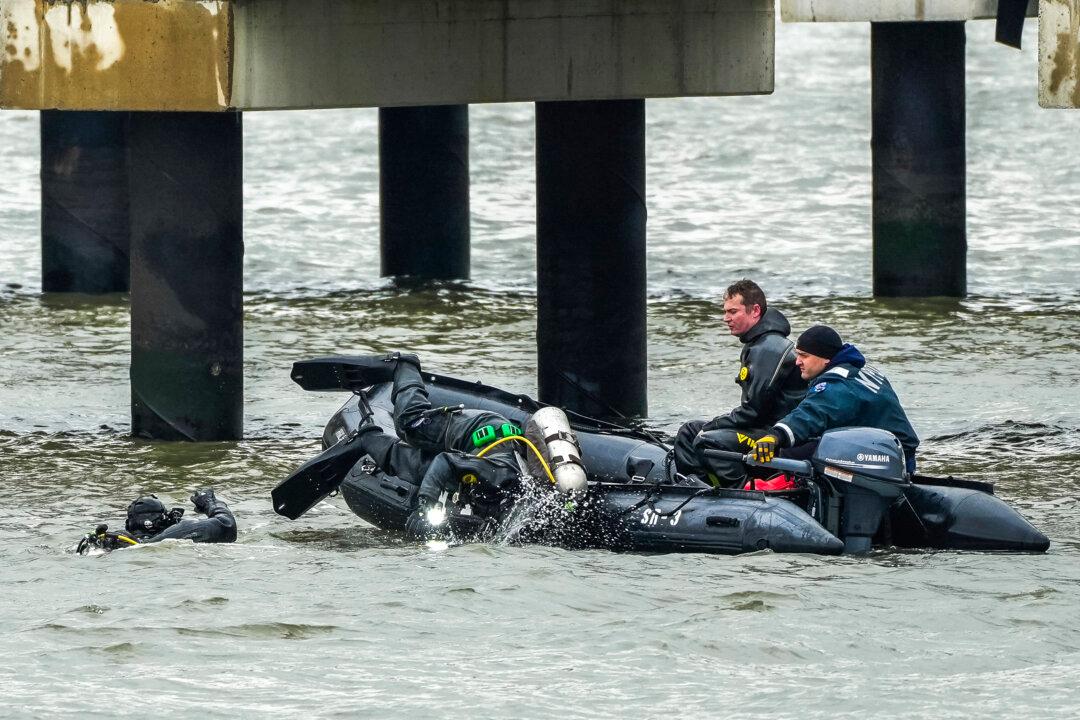The Philippines on Oct. 23 summoned China’s ambassador after a Chinese coast guard ship made “dangerous blocking maneuvers” against a Philippine ship that was operating within its Exclusive Economic Zone (EEZ) in the South China Sea, causing a collision.
The collision occurred on Oct. 22, when the Philippine boat, which was attempting to deliver supplies to troops stationed at Ayungin Shoal, had its path blocked and collided with a Chinese coast guard ship.
There were no reports of injuries, although the task force said the Chinese vessels’ actions imperiled the safety of the crew aboard the Philippine ships. It condemned the “provocative, irresponsible, and illegal actions” of the Chinese ships in the “strongest degree.”
The Philippine government has in the past attempted to address maritime issues with China through their communication hotline, but this mechanism had proven “rather limited,” Ms. Daza told reporters.
“As we did in the past, we intend to clearly convey our position that we have every right under [United Nations Convention on the Law of the Sea (UNCLOS)] to carry out our legitimate activities in our maritime zones and that we do not accept any form of interference,” she said, according to a Philippine state-run news agency.
The 1982 UNCLOS, to which China is a signatory, designates maritime areas within 200 nautical miles of coastal nations’ borders as part of their EEZ.
The Philippines’ position was recognized by the Permanent Court of Arbitration in a 2016 ruling. However, the Hague Tribunal’s ruling didn’t change China’s communist regime’s behavior, with Chinese vessels repeatedly intruding into the Philippines’ maritime zones.
Ayungin Shoal, also known as the Second Thomas Shoal or Renai Reef by China, is about 105 nautical miles from the Philippines’ Palawan province, making it part of the country’s jurisdiction.
US, Others Voice Support for the Philippines
Meanwhile, the U.S. State Department issued a statement on Oct. 22 saying that the United States stands with its ally the Philippines in the face of Beijing’s “dangerous and unlawful actions” in the South China Sea.The department affirmed that any armed attacks on the Philippine armed forces, public vessels, and aircraft “anywhere in the South China Sea” would trigger a response according to the defense treaty between the United States and the Philippines.
Japan, Australia, and the United Kingdom have also condemned the aggression by the Chinese vessels.
“Japan strongly opposes any unilateral attempts to change the status quo by force or coercion,” Japanese Ambassador to the Philippines Koshikawa Kazuhiko wrote on X on Sunday, adding that Japan stands by the Philippines’ position in upholding international maritime order based on UNCLOS and the Hague’s 2016 decision in favor on Manila.
Australian Ambassador to the Philippines Hae Kyong Yu also wrote on X that Canberra “is concerned by China’s dangerous maneuvers that damaged Philippine vessels and disrupted a Philippine resupply mission in the Philippine EEZ.”
“The South China Sea is a vital international waterway for us all. We again call for peace, stability and respect for Unclos,” she said.
UK Ambassador to the Philippines Laure Beaufils said that London is “very concerned by reports of unsafe conduct towards Philippines vessels on their latest resupply mission to the Ayungin Shoal.”
She added that the United Kingdom stands by the Philippines in calling for all parties adherence to UNCLOS and the 2016 arbitral award.
Despite a united outcry against its claims, the Chinese Communist Party (CCP) continues to push its territorial claims over nearly all of the South China Sea, including reefs and islands that overlap with the EEZs of Vietnam, Malaysia, Brunei, Indonesia, and the Philippines.








